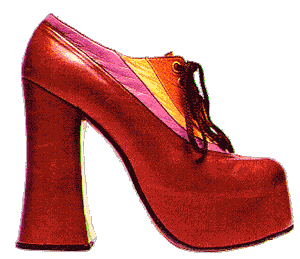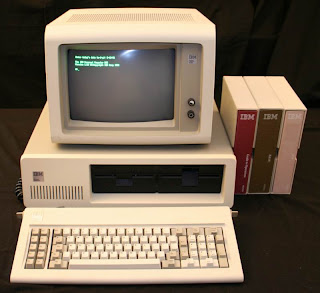Monday, 24 November 2008
Animation videos provided By Shereen Harrison
Sunday, 23 November 2008
People in 1980s

The Marriage of the Decade - In 1981, the royal wedding took place at Buckingham Palace in London, England. Prince Charles married a kindergarten teacher named Diana Spencer. Crowds of 600,000 people filled the streets of London to catch a glimpse. This woman was very lucky to have all of those people watching her get married. It was an unbelievable sight at the palace. The queen had a new daughter-in-law, Princess Diana.
The First Woman In Supreme Court - July 7, 1981, President Ronald Reagan nominated Sandra Day O' Connor for the U.S. Supreme Court.
The Worst Assassins - March 30, 1981, President Ronald Reagan was shot in the chest as he was walking to his limousine. His doctor removed the bullet and he recovered quickly. The assassin , John Hinkly Jr., was not found guilty!
May 1981, Pope John Paul II was shot. He was riding in a car around Rome. An escaped criminal from Turkey shot the Pope twice from the window.
Ref:http://www.kidsnewsroom.org/elmer/infoCentral/frameset/decade/1970.htm
Michael
People in 1970s
Monday, 17 November 2008

 1936: Helicopter was invented to be able to fly.
1936: Helicopter was invented to be able to fly. 1932: Radio telescopes were invented to pick up sound signals.
1932: Radio telescopes were invented to pick up sound signals. 1930: The jet engine was invented.
1930: The jet engine was invented. 1927: Picturephones were invented, but failed to catch on significantly until late 1990s.
1927: Picturephones were invented, but failed to catch on significantly until late 1990s.
1926: Liquid- fuelled rocket was invented to go to the moon & sustain flight.
Technology 1925 - 1940 & 1970 - 1985 By Shereen Harrison
Fashion by Louisa Baccelli
 Flapper fashion 1925
Flapper fashion 1925
 Uniforms and Patriotic Fashion Looks 1940
Uniforms and Patriotic Fashion Looks 1940During the Second World War Paris produced restrained clothing to match the economic atmosphere. The general wartime scene was one of drabness and uniformity, continuing well after the war finished in 1945. There was an austere atmosphere and people were encouraged to 'make do and mend.'
Uniforms were seen at all civilian social occasions from cinemas, weddings, restaurants to gala events. It was impossible to go anywhere without being aware of war as uniformed men and women in auxiliary services were an everyday fact.

Flared Trousers, Bell Bottoms and Trouser Suits 1970
Trousers and trouser suits were serious fashions in the 1970s.
Pants began gently flared and reached wide bell bottom proportions by about 1975. After which they slowly reduced to straight and wide until by the end of the seventies they were finally narrow again. Popular fabrics included heavy crepes, wool jersey knits, Courtelle jersey and woven Polyester suiting such as Trevira. Emerald green, apple green and bottle green were all favoured fashion colours of the early 1970s. Right - Green trouser suit pattern of 1971. This style of trouser suit with a hip length tunic, was very typical of fashion trends of 1971 and 1972.
Farrah Fawcett Major and her actress colleagues of the series 'Charlie's Angels' helped popularise not only flared trousers, but also a rough cut hairstyle which demanded constant use of tongs, or heated rollers to make the hair flicks. Many women kept spare electric curling tongs or heated rollers at work, to maintain the flickups in Farrah style.
Tights sales plummeted when some women chose to wear pop socks beneath trousers. Heavy crepes used to make wide legged trousers often emulated the Chanel trousers of the 1930s. They were worn with small knitted short vests or scoop neck tank tops. Waistcoats were popular in any length from traditional, to hip length to maxi.

Platform shoes 1970s

Disco fashion 1970s

Power Dressing 1980s


The 1980s Madonna Look
Saturday, 8 November 2008
Monday, 3 November 2008
Art styles (ref.: wikipedia)


Postmodernism is a complicated term, or set of ideas, one that has only emerged as an area of academic study since the mid-1980s. Postmodernism is hard to define, because it is a concept that appears in a wide variety of disciplines or areas of study, including art, architecture, music, film, literature, sociology, communications, fashion, and technology. It's hard to locate it temporally or historically, because it's not clear exactly when postmodernism begins.

Magic Realism developed as an art movement in the years after World War I. For many decades thereafter numerous artists throughout Europe and subsequently in the Americas crafted a representational art, mixed with elements of fantasy. This art was often typified by sharp focus and remarkable detail. Magic Realism evolved as a current within the Post-Expressionism movement in Weimar Germany. Related to the Return to Order movement as seen elsewhere in Europe, Post-Expressionism exhibited fewer neoclassical impulses than the trends in Italy and France.

Kinetic art is art that contains moving parts or depends on motion for its effect. The moving parts are generally powered by wind, a motor or the observer. The term kinetic sculpture refers to a class of art made primarily from the late 1950s through 1960s.

Neoplasticism, was a Dutch movement founded in 1917. In a narrower sense, the term De Stijl is used to refer to a body of work from 1917 to 1931 founded in the Netherlands. De Stijl is also the name of a journal that was published by the Dutch painter, designer, writer, and critic

Surrealism is a cultural movement that began in the early-1920s, and is best known for the visual artworks and writings of the group members. Surrealist works feature the element of surprise, unexpected juxtapositions however many Surrealist artists and writers regard their work as an expression of the philosophical movement first and foremost, with the works being an artifact.
















